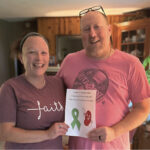 What can make 100 high school students sit with silent attention for two entire hours?
What can make 100 high school students sit with silent attention for two entire hours?
No, I don’t mean playing games on their cell phones. I’m referring to “Surgery Live!” at Whitaker Center, an interactive program simulcasting routine surgeries from an operating room at Penn State Hershey Medical Center.
There’s not even a test afterwards.
Students watch surgeons perform outpatient procedures such as cholecystectomy (gallbladder removal), hysterectomy, gastric sleeve, urology and endoscopy. They can even ask the doctors questions. Highmark Blue Shield has sponsored the program since it came to Whitaker Center in 2009.
“’Surgery Live!’ is one of our most popular educational programs, and it’s also one of the most unique,” said Dr. Michael Hanes, Whitaker Center’s president & CEO. “Only three other institutions in the U.S. offer surgery simulcast programs similar to ours.”
Ahead of the Curve
On a recent random Thursday, four different schools brought sophomores through seniors to observe a cholecystectomy. Prior to the surgery, Joshua S. Winder, a resident from Penn State Hershey Medical Center, walked the students through the procedure, giving them a glimpse of what a career in the medical field could be like for them.
It would be tempting to want to begin the lesson in the operating room, to get to the action right away. But, first, Winder took them through all the real-world steps.
“The patient came to the doctor complaining of certain symptoms. The pain was right here,” he said, pointing to the upper-right side of his abdomen.
He kept the explanation relevant with lots of questions, diagrams and a quick anatomy lesson.
All 100 students stayed professional and attentive, even when Winder explained how a healthy gallbladder functions. (It filters bile out of the body and into solid waste, turning it brown.) Then they learned how an unhealthy gallbladder backs up with gallstones, composed of bile salts and cholesterol.
Part of the “Surgery Live!” program is a video about medical careers and what it takes to make a surgery happen.
“Besides the surgeon, there are a lot of other people in the O.R. who make a surgery successful,” said Brian Ariano, Whitaker Center production manager. “High school students are sometimes shocked to find that the person who maintains the sterile environment of the room is equally important as the person performing the procedure.”
Through the video, students learned that someone administers medication to the patient, ensures paperwork is completed and other details. All of these roles are viable positions in the medical field that high school students could consider.
When Winder introduced the students to the surgeon via a live camera feed, they alternated between asking questions and handling surgical instruments being passed around the room.
The camera showed the patient lying on the operating table, already sedated and pumped full of carbon dioxide gas. (The gas created space for the instruments and internal camera to maneuver safely inside the body.)
“I didn’t see this surgery until my third year of medical school,” Winder said. “You students are ahead of the curve. For this reason, I think the ‘Surgery Live!’ program is amazing.”
Winder narrated play-by-play what the surgeon did. Rather than open the patient up, the laparoscopic surgery required just a small incision. Then the surgeon slid robotic arms covered in plastic inside the incision.
“The robot memorizes positions, so it keeps ports in the same place,” said Winder. On the down side, “The robot can’t feel resistance or give feedback. Robot arms tear right through the tissue.”
The surgeon operated the robot with hand and foot pedals, explaining as the arms isolated the gallbladder. They pushed aside the surrounding pancreas and a layer of fat. The surgeon explained the importance of leaving cysts in their place and avoiding the bile duct as he maneuvered around them.
The camera provided a close-up of the process of sucking out the bile, clamping it with clips. Then he used cauterized scissors to burn through thick walls of organ, artery and ducts. The surgeon separated it with careful cuts and placed it in a plastic bag to avoid bile leakage into the body.
“The surgeon literally peeled the gallbladder off the liver bed,” Winder said.
What if something went wrong during the surgery? In that rare event, Ariano has taped footage of a successful operation ready to roll.
“We tell patients there is a higher risk of driving to the surgery than there is in actually having it,” Winder said.
So Special
This particular cholecystectomy progressed successfully.
Students watched with rapt focus as the surgeon pulled the gallbladder out through the incision, followed by the internal camera. When he cut the gallbladder open, he pulled out a gallstone measuring three centimeters.
At the beginning of this program, few of the students knew where a gallbladder was, or what function it served in the body. By the end, they had seen the inside of one.
After the camera feed cut to black, Winder asked the students, “Are any of you now thinking of a career in surgery?” Several students raised their hands.
“I think one of the most rewarding merits of ‘Surgery Live!’ is hearing the feedback we receive from teachers who brought their students to Whitaker Center,” Hanes said. “Teachers have told us that participating in ‘Surgery Live!’ is what solidified their students’ interest in the medical profession. They are just beginning to dive into health care field curriculum. That’s what makes what we do at Whitaker Center so special.”
If you would like more information about “Surgery Live!” at Whitaker Center, visit whitakercenter.org or call 717-214-2787.





